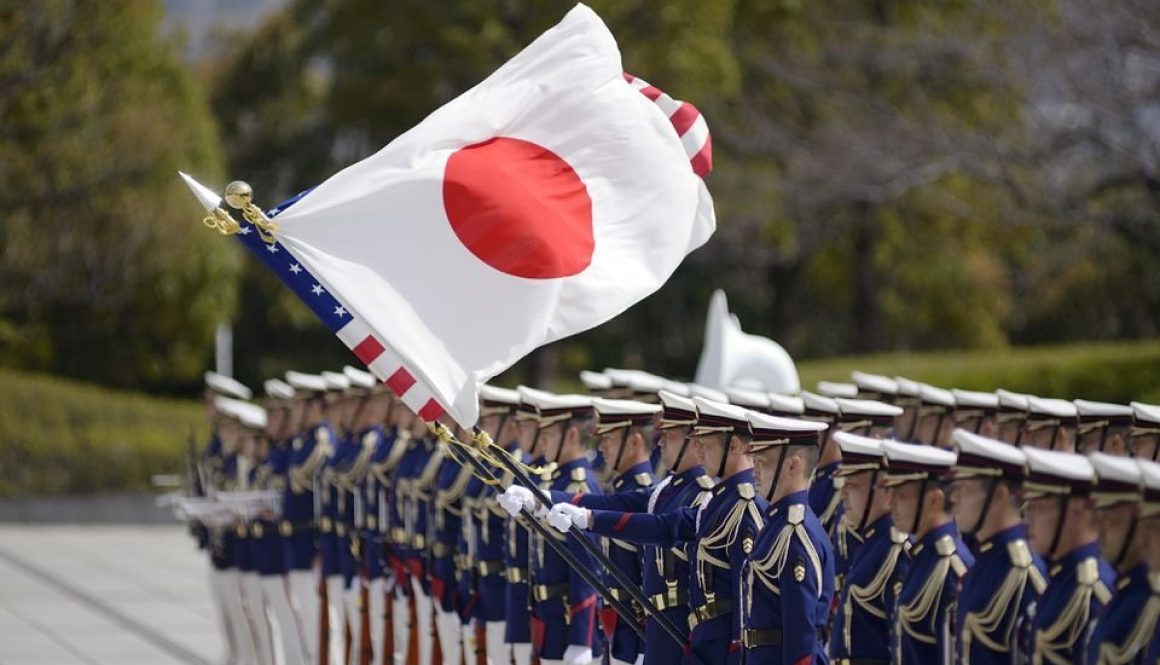Japan National Security Strategy in The Middle of China’s ‘Threats’
On 16 December 2022, the Japanese government approved three key security documents to guide the nation’s foreign and defence policies for the next ten years. According to the national news media, the central pillar of the documents, such as the National Security Strategy (NSS), the National Defense Strategy (NDS), and the Defense Buildup Program (DBP), reflect a significant shift in the nation’s postwar security policy. The NSS specifies the possession of counterstrike capabilities, especially on missiles, for self-defence purposes.
Japan used to only referred the counterstrike capabilities in the self-defence scope but never specified the possession of such capabilities as part of its policy. To improve its ‘counterstrike capability,’ Japan’s cabinet also approved a 20 per cent rise in the defence budget for 2023 to 6.8 trillion yen or USD5,5 billion. Cited from Al Jazeera, the increase in military spending is part of the new NSS goals to double Japan’s defence spending to 2 per cent of gross domestic product (GDP) by 2027, in line with NATO standards. The budget includes Japan’s plan to purchase US-made Tomahawks at 211.3 billion yen or $1,6 billion and other long-range cruise missiles capable of hitting targets in China or North Korea. Then, what makes Japan change its policy and strategy?
China as the ‘greatest strategic challenge’
Changes in Japan’s latest NSS are due to a rise in challenges and security threats from China, North Korea, and its ally Russia. China and Japan have been in high-alert tension for so long, and now with the perception that China can invade Taiwan at any time, Japan is more conscious of its security challenges. In its strategy documents, Japan stated that the US and China’s rivalry has increasingly become an arms buildup.
The new NSS also states, “China’s current external stance, military activities, and other activities have become a matter of serious concern for Japan and the international community, and present an unprecedented and the greatest strategic challenge in ensuring the peace and security of Japan and the peace and stability of the international community as well as in strengthening the international order based on the rule of law.” The phrases reflect that the Japanese have seen China as a serious concern and threat to its vital interest, which is the state’s survival, sovereignty, and regional stability.
The statement also refers to China’s military modernisation program and increasing maritime pressure on Japan in the East China Sea, where China claimed the uninhabited Senkaku Island, which they called Diayou. The Japanese Defense Ministry confirmed that the Chinese Coast Guard and its naval ships have wandered around the Senkakus.
North Korea’s missile threats
From the North Korean side, on the 75th anniversary of the North Korean army, President North Korea Kim Jong Un revealed the new solid-fueled intercontinental ballistic missile (ICBM). The parade showed at least 11 of North Korea’s ‘monster’ Hwasong 17 ICBMs, and Japan’s Defense Ministry considered the Hwasong-17 the world’s largest road-mobile liquid-fueled missile capable of travelling more than 15,000 kilometres, depending on the weight of the warhead it is carrying.
Although North Korea has yet to launch a missile this year, the continuous missile development programs are perceived as threats by the Japanese government. As confirmed by the US Deputy Secretary of State Wendy Sherman, the US and Japan, and South Korea will work to deter North Korea’s nuclear and missile threats and press to denuclearise the Korean Peninsula. These three countries have the same perception and goals in maintaining peace and stability in the Indo-Pacific region.
Noting its dynamic geopolitical situation in the region, Japan is committed to boosting its defence and security capabilities. If China ever intends to invade Taiwan or North Korea keeps pressuring Japan, the Japanese government will be directly involved and defend itself. Now it is Japan’s turn to prove how effective its response would be and how it will be sufficient for countering the multidimensional issues with China and North Korea. To initiate defence operations, the Japanese government should build its law enforcement action and military operation capabilities, cooperating with its allies, the US.
